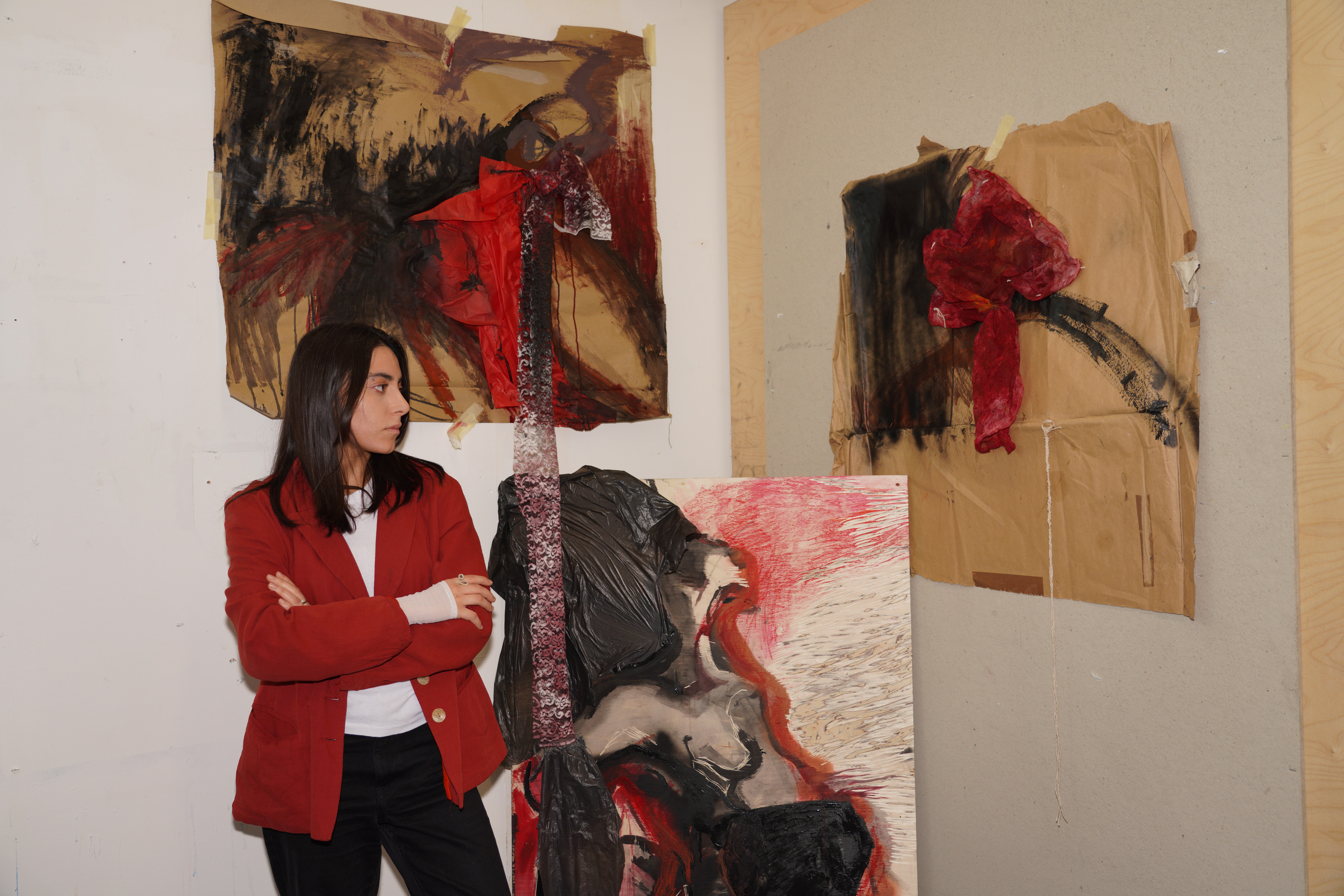TATIA
MAMULASHVILI

BIO
Born in Georgia and now based in East London, artist
Tatia Mamulashvili is a painter whose practice inhabits the
intersection of figurative expressionism, abstraction, and
installation.
Mamulashvili’s work explores the fragile boundary between internal and
external worlds. Her figures, often dissolving or metamorphosing into
space, embody a shifting sense of identity, one that moves between
self and others. Disrupting the idea of a body as a whole unified
object, she manifests the fragmented, unstable way the subject
experiences themselves. Her blurry, ambiguous figures suggest inner
states that are constantly changing, unknown even to herself.
Through painting, she probes for hidden and
forgotten feelings: love, grief, loss, and fear- using art as a field
for what remains undefined.
Mamulashvili often works with bricolage, combining
fragile and used materials such as paper, fabrics, Georgian curtains
from her hometown, bin bags and found objects. Each carrying its own
ineffable history and energy these materials, transported from their
original purposes, are transformed through cutting, tearing, sewing,
and glueing. In these acts of damage and repair, Mamulashvili
expresses both destruction and healing, exploring impermanence,
vulnerability, and renewal.
Moving towards installation marks a new emergence in
her practice. With a background in architecture and traditional
academic art training - where precision, perspective, and the comfort
of certainty were keystones - Mamulashvili now chooses to create
spaces that reject safety and challenge stability. Instead of
designing harmonious environments, she constructs fragmented,
unsettling spaces that invite emotional and psychological engagement.
She aims not to offer comfort but to provoke direct embodied
responses, allowing viewers to feel, question, and inhabit the
emotional landscapes she creates.
EXHIBITIONS
December 2025 | Abstract in Motion | Group Exhibition, Art Gallery Finesteria, Milan, Italy
September 2025 | MAFA Postgrad Show | Group Exhibition, Way out East Gallery, London
April 2025 | AD 7002 | Group Exhibition, Way out East Gallery, London
February 2025 | 24 Hour HUNAROUND show | Group Exhibition, Way out East Gallery, London
December 2024 | Stairing Up | Group Exhibition, Tower Gallery, London